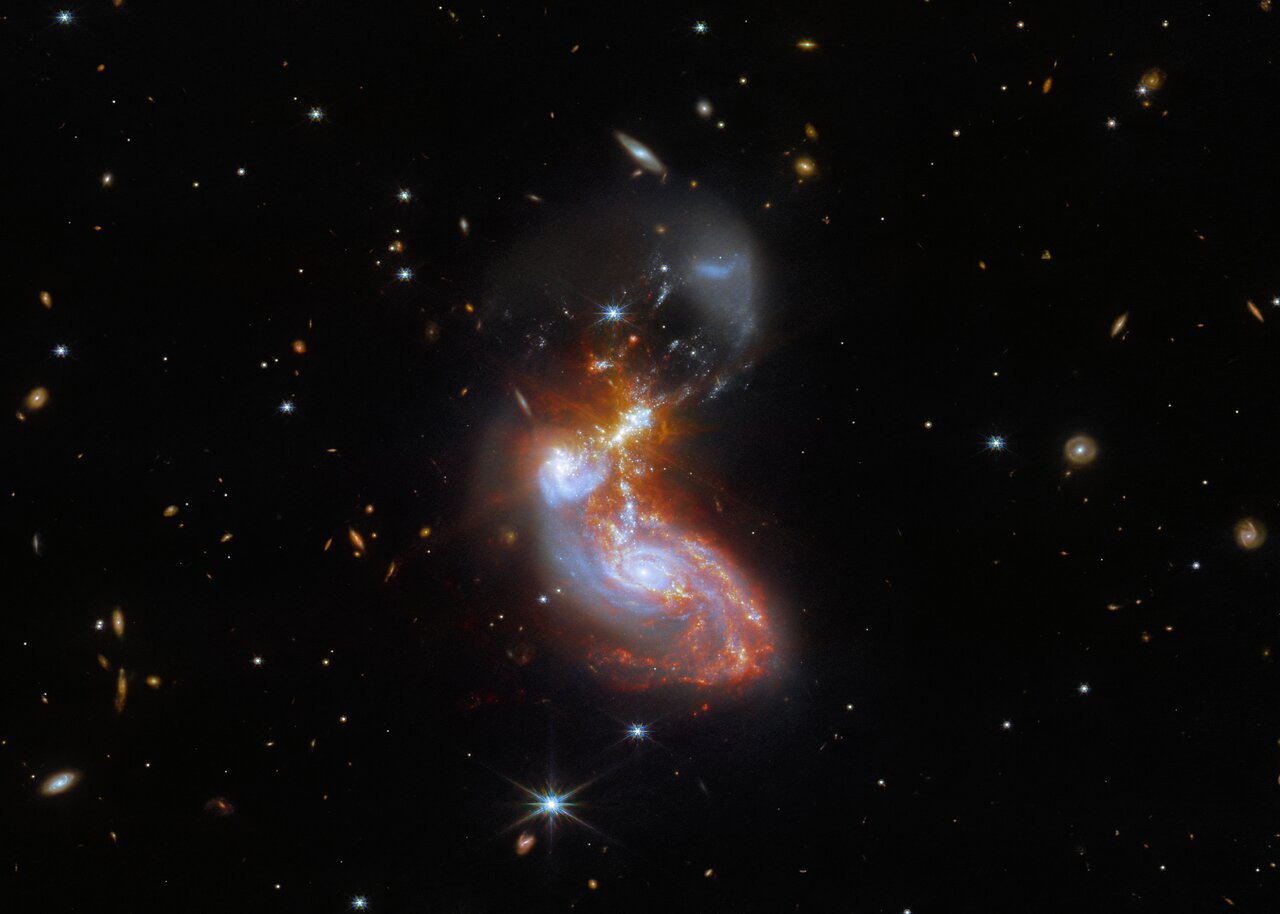Cosmos IIZW96
This pair of merging galaxies, known to astronomers as II ZW 96, is roughly 500 million light-years from Earth and lies in the constellation Delphinus. As well as the wild swirl of the merging galaxies, many background galaxies are dotted throughout the image. The two foreground galaxies are in the process of merging and as a result have a chaotic, disturbed shape.
A merging galaxy pair cavort in this image captured by the NASA/ESA/CSA James Webb Space Telescope. This pair of galaxies, known to astronomers as II ZW 96, is roughly 500 million light-years from Earth and lies in the constellation Delphinus, close to the celestial equator. As well as the wild swirl of the merging galaxies, a menagerie of background galaxies are dotted throughout the image.
The two galaxies are in the process of merging and as a result have a chaotic, disturbed shape. The bright cores of the two galaxies are connected by bright tendrils of star-forming regions, and the spiral arms of the lower galaxy have been twisted out of shape by the gravitational perturbation of the galaxy merger. It is these star-forming regions that made II ZW 96 such a tempting target for Webb; the galaxy pair is particularly bright at infrared wavelengths thanks to the presence of the star formation.
This observation is from a collection of Webb measurements delving into the details of galactic evolution, in particular in nearby Luminous Infrared Galaxies such as II ZW 96. These galaxies, as the name suggests, are particularly bright at infrared wavelengths, with luminosities more than 100 billion times that of the Sun. An international team of astronomers proposed a study of complex galactic ecosystems — including the merging galaxies in II ZW 96 — to put Webb through its paces soon after the telescope was commissioned. Their chosen targets have already been observed with ground-based telescopes and the NASA/ESA Hubble Space Telescope, which will provide astronomers with insights into Webb’s ability to unravel the details of complex galactic environments.
Webb captured this merging galaxy pair with a pair of its cutting-edge instruments; NIRCam — the Near-InfraRed Camera — and MIRI, the Mid-InfraRed Instrument. If you are interested in exploring the differences between Hubble and Webb’s observations of II ZW 96, you can do so here.
